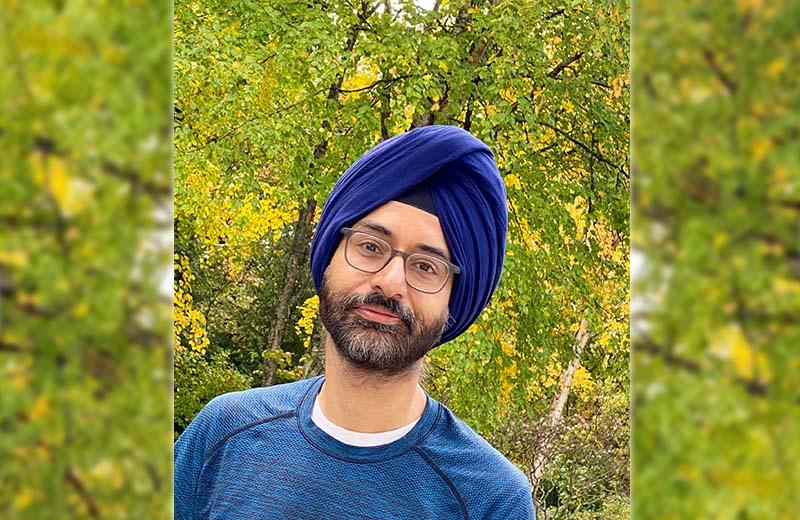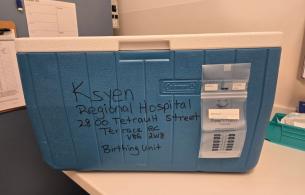How do we address the challenge of providing fair access to specialized services to patients in the remote communities of Northern BC? For Dr. Anurag Singh, Medical Lead for the Northern Health Kidney Care program, and his team based at the University Hospital of Northern BC (UHNBC) in Prince George, this is a very important question.
Northern solutions for Northern communities
Before the COVID-19 pandemic, Dr. Singh and his team had implemented a comprehensive telehealth program, Tele-Kidney Care. Clients could go to their local health clinic or hospital to connect with the kidney care team in Prince George via video appointments. The aim of this project was to expand the reach of specialized programs (such as kidney care) beyond UHNBC.
Travelling for medical appointments can be challenging and expensive for Northern patients, especially those from rural and remote communities. The telehealth program, which started in 2015, was one of the first organized attempts from specialized services in Northern Health to overcome some of these barriers using modern technology. In 2019, Dr. Singh and his team evaluated their telehealth program. At that time, 30-40 per cent of patients were accessing their appointments virtually, without having to travel to Prince George. Due to concerns about patient security and confidentiality, these appointments were offered via internal video, and were not accessible from the patient’s home. Instead, patients had to go to a local Northern Health clinic or hospital for their appointments.
With the increasing availability of internet and smartphone technology in smaller communities, the kidney care team in Prince George has been on the lookout for safe platforms that patients can use at home. It was the COVID-19 pandemic that helped provide the urgency, approval, and technology needed to start the next leg of this journey.
Making virtual care at home a reality
After the COVID-19 public health emergency was declared in March 2020, a major focus was to keep patients safe and healthy in their own homes. Trips to local hospitals or clinics may not have been safe, especially for patients with specialized needs. Recognizing these concerns, but also keeping the essential needs of patients in mind, the Northern Health kidney care team began to connect with patients over the phone, in their homes. Phone appointments, however, had their own challenges and required extra coordination as some of the team members were working offsite due to limited space in clinics.
The search for the right platform for video appointments thus became much more important, and was eventually resolved by a generously provided Zoom for Healthcare license that solved concerns around technology hosting, information storage, and privacy and confidentiality. Zoom also allowed Dr. Singh, his physician colleagues, and specialized team members to offer patients an alternative to telephone and face-to-face appointments. Patients were now able to access direct, specialized information from the comfort of their homes.
Dr. Singh is now looking at further opportunities to improve virtual health programs to add value for his patients. For example, he’d like to individualize virtual appointments to the needs of every person. He would also like his patients and care team to understand the limitations of virtual health care and its long-term impact on delivery of care. This will help patients make informed choices on whether to travel or have virtual appointments for convenience and ease of access.
Dr. Singh and team are constantly working to improve the quality of their programs. To do this, they use ongoing data collection, including patient and physician surveys. This allows them to understand what’s working and what could be improved.
Supporting understanding and connecting care teams
“The other piece that we’re working on,” says Dr. Singh, “is the effectiveness of clinical interactions using virtual platforms. Do patients understand the information delivered virtually? If it works, we can utilize Zoom to fill gaps in patient education and provide information in a structured way on an ongoing basis. For example, we’re exploring the utility of regular webinars to discuss kidney-related topics for patients using Zoom with Northern Interior Rural Division of Family Practice. This complements our existing efforts to engage and partner with patients for more meaningful interactions and inform system-wide changes. My colleague Dr. Din is leading this work in our program.”
The team is also exploring using Zoom for health care provider interactions and education.
“We can build capacity and improve quality of care for patients by improving communication and relationships between primary care and specialized teams,” says Dr. Singh.
Through Zoom, Dr. Singh and his team can work with primary care teams, including clerks, nurses, and allied health staff (such as dental hygienists, dietitians, physical therapists, and other professionals). In those open conversations, they can discuss myths of care, reduce misinformation, and provide resources to help with patient care. They can also work with primary care teams to get up to speed on important kidney-related guidelines and topics. These conversations could help new family doctors to build and maintain professional relationships with specialists and improve care for patients.
Dr. Singh feels that virtual care needs to fit into a continued and holistic model of care. Virtual interactions are not likely to give the same outcomes as continued in-person care.
In addition to this program and his work as a nephrologist/internist at UHNBC, Dr. Singh is involved in research with academics at UNBC’s Health Research Institute and the Northern Medical Program. Dr. Singh has received quality improvement training from the Institute for Healthcare Improvement and Northern Health’s Physician Quality Improvement program, and his projects have been funded by Northern Health Physician Quality Improvement and the provincial Specialist Services Committee.
To see completed and ongoing PQI projects across the North, visit the PQI project map.














Comments